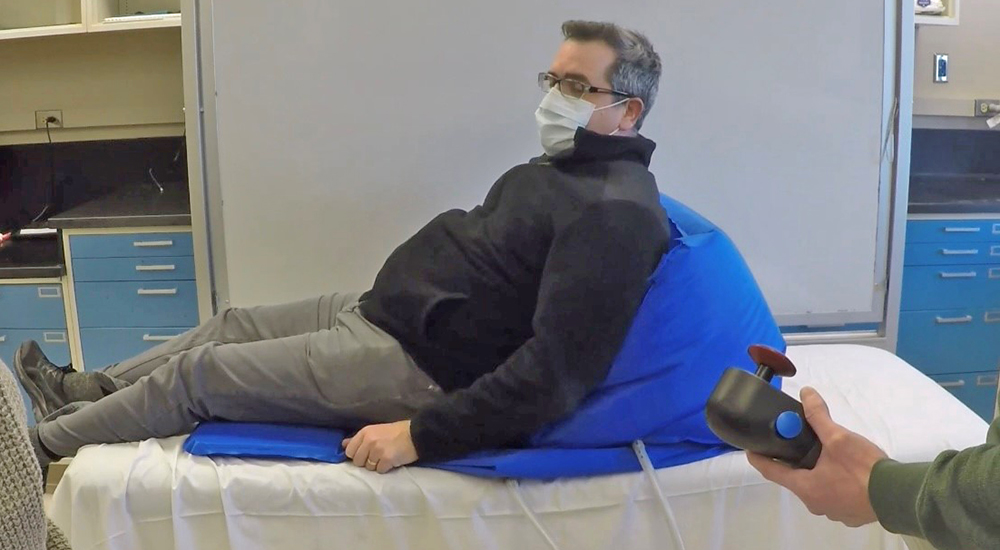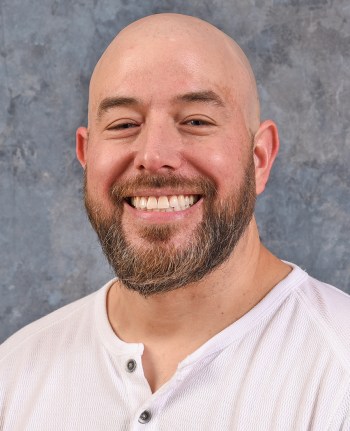When it comes to Veteran care, frontline staff experience their challenges firsthand every day. One challenge MRI technologist Kevin Johnson observed is kyphosis, which affects 20 percent of the Veteran population. Kyphotic Veterans have a curvature of the spine that prevents them from sitting and standing up straight or lying down flat.
Kyphotic patients generally have difficulty in certain medical exams, like MRIs, which require patients to lay flat for an extended period. MRI Technologists can injure themselves, or even worse, the patient, when trying to get them into the right position.
Enter the VHA Innovators Network (iNET) to teach Johnson how to ease this challenge for both Veterans and staff.
Finding a better way
A Cincinnati native, Johnson has been an MRI technologist at Cincinnati VA since 2018. Witnessing firsthand the difficulty both Veterans and other caregivers were experiencing, Johnson thought, “There has to be a better way.”
That’s when Johnson began designing the kyphotic wedge, an inflatable device that uses air to push a patient back to proper positioning.
An inflatable wedge
The kyphotic wedge is unique in that it helps to position a patient and can help them sit upright. Originally using an external air pressure device outside of the MRI Room, Johnson discovered a vacuum inside the exam room could be used to inflate the wedge. A remote is used to tilt a patient back or help them sit up.
“It was so simple. I thought why haven’t they made this already?” said Johnson. Right now, however, the obstacle is getting the wedge to the next step. Johnson’s fellow employees have helped him test the wedge, as well as one very eager Veteran. Next is seeking approval from the Institutional Review Board to begin testing on patients.
Johnson applied to participate in iNET’s Spark-Seed-Spread Innovation Investment and Accelerator Program, which supports frontline employees’ journey from identifying a challenge to designing a solution. He was awarded a Spark investment in 2021.
The Minneapolis Adaptive Design and Engineering (MADE) Program, as well as VA’s Technology Transfer Program, are providing Johnson support to prototype and patent the device.
The next challenge
Keeping the momentum of the positive Veteran and employee feedback garnered thus far, Johnson is already thinking of how to make the wedge more effective. He is currently brainstorming ways to have the wedge assist in getting patients on and off the exam table.
“At the beginning stage, an extremely kyphotic Veteran wanted to sit on the device outside of the MRI and it really worked for him,” he said. VA employees who have participated in feedback sessions with Johnson are eager to utilize the device once it becomes widely available.
Johnson credits the innovation process and the Veterans for giving him a stronger connection to his role. “When I first started working, my jobs were more about clocking-in and clocking-out. Now, I feel like I’m finally part of an organization. I’m doing something to better VA and help Veterans. It’s been a great, positive experience.”
Want to support VA IE’s innovation revolution? Visit our website to learn about opportunities to become involved in innovation at VA.
Innovation Revolutionary is a recurring series from the VA Innovation Ecosystem, focusing on VA employees who are disrupting the status quo, breaking down barriers, and attempting to radically revolutionize Veteran care and the employee experience.
Topics in this story
More Stories
Study underscores important role COVID vaccination can have in protecting Veterans from infection and reducing long-term health consequences
Columbia VA’s robotic surgery teams completed their 800th robotic surgery and are on schedule to hit 1,000 by the end of the year.
In a decentralized clinical trial, Veterans can participate from their own homes or local VA instead of having to travel to a research site.








Sure would be better if the MRI itself could change angles so as to accommodate any seated position.